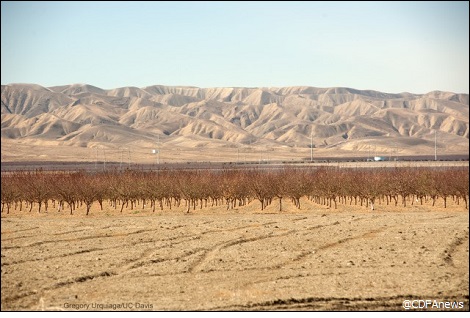
|
|

|
|
| April 20, 2024 |
|
California has some of America’s richest farmland — but what is it without water? 
ORBEND – (INT) - In America’s fruit and nut basket, water is now the most precious crop of all.
It explains why, amid a historic drought parching much of the American West, a grower of premium sushi rice has concluded that it makes better business sense to sell the water he would have used to grow rice than to actually grow rice. Or why a melon farmer has left a third of his fields fallow. Or why a large landholder farther south is thinking of planting a solar array on his fields rather than the thirsty almonds that delivered steady profit for years. “You want to sit there and say, ‘We want to monetize the water?’ No, we don’t,” said Seth Fiack, a rice grower in Ordbend, on the banks of the Sacramento River (in Glenn County), who this year sowed virtually no rice and instead sold his unused water for desperate farmers farther south. “It’s not what we prefer to do, but it’s what we kind of need to, have to,” the California Department of Food and Agriculture (CDFA) reported. These are among the signs of a huge transformation up and down California’s Central Valley, the country’s most lucrative agricultural belt, as it confronts both an exceptional drought and the consequences of years of pumping far too much water out of its aquifers. Across the state, reservoir levels are dropping and electric grids are at risk if hydroelectric dams don’t get enough water to produce power. Climate change is supercharging the scarcity. Rising temperatures dry out the soil, which in turn can worsen heat waves. Early summer temperatures in parts of California and the Pacific Northwest have been shattering records. By 2040, the San Joaquin Valley is projected to lose at least 535,000 acres of agricultural production. That’s more than a tenth of the area farmed, the CDFA reported. And if the drought perseveres and no new water can be found, nearly double that amount of land is projected to go idle, with potentially dire consequences for the nation’s food supply. Story Date: August 8, 2021
|